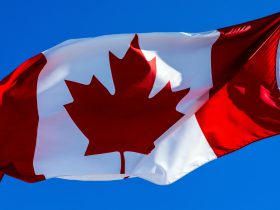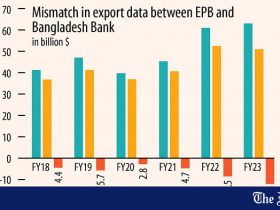UK Could Emerge as an Unintended Winner in the EU-U.S. Trade Pact
As world leaders and economists digest the newly minted EU-U.S. trade agreement, analysts suggest that the United Kingdom could be a surprise beneficiary, even though it’s not directly involved in the deal.
Under the new agreement, European Union goods will face a 15% tariff when entering the United States—5% higher than the 10% rate the U.K. has already negotiated with Washington.
“In theory, this benefits the UK,” said Philip Shaw, Chief Economist at Investec, in comments to CNBC. “UK exports have effectively become cheaper for U.S. buyers, especially when compared with EU goods, which could shift transatlantic trade in the UK’s favor.”
Tariff Gap Makes British Goods More Competitive
The lower tariff rate means British products now carry a pricing edge in the U.S. market. American companies and consumers may be more inclined to purchase goods from the UK, bypassing more expensive EU alternatives.
According to Alex Altmann, Partner at Lubbock Fine LLP, “The UK’s favorable tariff position creates a strong incentive for EU firms to relocate manufacturing to Britain or expand their existing UK operations.” He added that companies with tight margins—especially in manufacturing—could find it cost-effective to produce goods in the UK to dodge the higher tariff burden.
Given the spare manufacturing capacity available in the UK post-Brexit, Altmann believes the country could quietly become a hub for EU-based exporters seeking tariff relief.
Brexit May Be Paying Off in Unexpected Ways
Altmann further argues that, “The UK could be a significant indirect winner from this trade agreement.” While Brexit created uncertainty and trade barriers, it also freed the UK to negotiate bilateral deals like the current U.S. tariff arrangement.
In this case, Brexit has allowed Britain to avoid the 15% tariff imposed on EU nations, strengthening its trade positioning and potentially reviving interest from global manufacturers.
Mutual EU-U.S. Relief Still Helps the UK
While the 15% tariff on EU goods may appear steep, it’s worth noting that it’s far less than the 30% initially threatened by U.S. President Donald Trump.
According to Investec’s Shaw, the avoidance of a 30% levy not only benefits the EU but also helps the UK indirectly. “A recession in the EU, triggered by excessive tariffs, would have negatively impacted UK exports to its largest trading partner,” he explained.
By securing a less aggressive deal, the EU has maintained a degree of economic stability that could preserve regional demand—including for goods and services from the UK.
Will the UK’s Advantage Be Short-Lived or Sustainable?
Trade experts caution that the real-world benefits for the UK will take time to materialize. According to Beth McCall, International Trade Lawyer at Dentons, “The difference between 10% and 15% tariffs may not be enough to immediately shift import behavior.”
She explained that most U.S. importers operate on long-term contracts, and only once those contracts expire will importers start sourcing from lower-tariff countries like the UK.
“If the U.S. had stuck with a 30% rate on EU goods, the UK’s 10% tariff would have been much more attractive in the short term,” McCall said.
Uncertainty Remains Over Global Economic Impact
Despite some optimism about the UK’s potential gains, the broader economic picture is still uncertain. Companies around the globe are already warning that new tariffs will cut into profits, and economists are raising concerns about a potential slowdown in global trade.
The exact terms and implementation timeline of the EU-U.S. trade deal are still evolving, meaning the full consequences—both intended and unintended—may not be clear for months.
McCall noted, “Tariff changes don’t ripple through the global economy overnight. The cost increases, manufacturing shifts, and consumer price effects may only become evident later.”
Higher Tariffs Still Pose Challenges for Both UK and EU
Even with a relative advantage, UK exporters are still facing higher costs than they did three months ago. McCall emphasized that regardless of whether the tariff is 10% or 15%, it still represents a significant increase from previous rates.
“Both UK and EU businesses now have to contend with a more complex and costly trade landscape when exporting to the U.S.,” she added.
The competitive edge is real—but so are the new hurdles, as businesses across Europe and the UK adapt to a rapidly shifting global trade environment.
Reference : Sophie Kiderlin







Leave a Reply